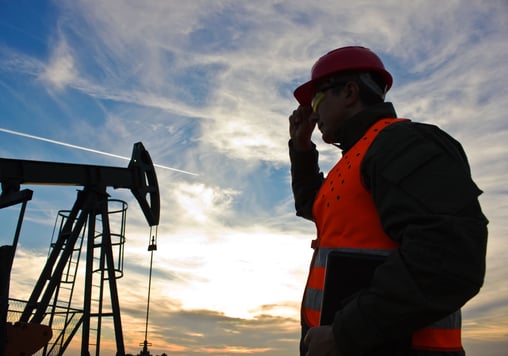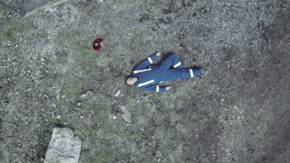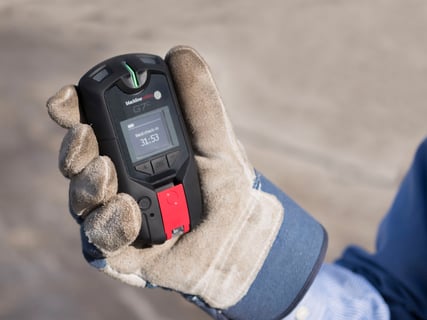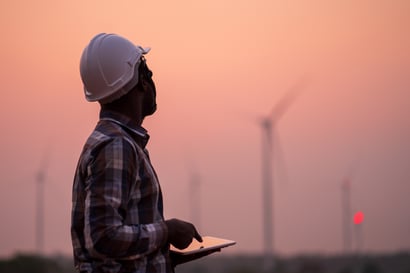Blackline Safety is a technology leader driving innovation in the industrial workforce through IoT (Internet of Things). With connected safety devices and predictive analytics, Blackline enables companies to drive towards zero safety incidents and improved operational performance. Blackline provides wearable devices, personal and area gas monitoring, cloud-connected software and data analytics to meet demanding safety challenges and enhance overall productivity for organizations with coverage in more than 100 countries. Armed with cellular and satellite connectivity, Blackline provides a lifeline to tens of thousands of people, having reported over 200 billion data-points and initiated over seven million emergency alerts. For more information, visit BlacklineSafety.com and connect with us on Facebook, Twitter, LinkedIn and Instagram.
Compromise is Not an Option with Lone Worker Safety – Part 1 of 2
Blackline Safety, Leader in Connected Gas Detection & Lone Worker Safety
July 15, 2021
Identify the potential risks for your lone workers
 A natural part of business is allocating and reallocating investments and resources into various areas. And, often, each department is asked to achieve more with less, leading to difficult decisions in order to achieve business goals. One key area where there can’t be any compromise is protecting workers from accidents, injuries and illnesses while they’re on the job.
A natural part of business is allocating and reallocating investments and resources into various areas. And, often, each department is asked to achieve more with less, leading to difficult decisions in order to achieve business goals. One key area where there can’t be any compromise is protecting workers from accidents, injuries and illnesses while they’re on the job.
“Lone” Doesn’t Always Mean “Alone”
When creating a safety plan for lone workers, companies often need to broaden their definition of what a lone worker is. There are some clear situations where an employee qualifies as a lone worker, such as people who work independently in remote locations or who frequently drive alone between worksites.
However, more employees qualify as lone workers than one might imagine. Berg Insight notes how there are an incredible 53 million people designated as lone workers in Canada, the United States and Europe. These extremely vulnerable workers account for about 15 percent of the total workforce in those countries. As a critical component keeping businesses moving towards their goals, the unique safety challenges of lone workers must be addressed.
Here are four main types of lone working scenarios to help your company comprehensively identify your lone workers:
Indoors
A general rule of thumb: a lone worker is one working out of sight or sound of a colleague or other qualified individuals. From warehouses and laboratories to large skyscraper construction sites and underground water treatment plants, many employees are considered to be working alone while indoors, even if there are others working in the building.
Outdoors
Potentially dangerous work sites outdoors can include oilfields and power plants, logging facilities, mine sites and more. A worker can be alone for extended periods of time or for the entire workday, often in challenging environmental conditions. If they were to be struck by equipment or another object, become fatigued, are electrocuted or otherwise become vulnerable or are injured how will they call for help? And who will be on the other end of the line to deploy the response they need? The way businesses address these questions could be the difference between a rescue or a recovery.
Driving
From long haul truck drivers to individuals who drive out to remote sites, employees can find themselves in dangerous conditions while on the road. So much so that one in five fatalities is caused by travelling hazardous roads for workers employed as drivers. The challenges and dangers of this work are compounded after a long day on the job when the driver is fatigued or when weather conditions are poor. If the worker is on the clock, the company is responsible for their safety — and if an accident occurs, the clock starts and doesn’t stop until help arrives.
Remote
When satellite technology is the only means of communication for workers, it qualifies as remote or lone work. These roles include biologists conducting research in mountains or on rivers, oilfield operators and maintenance personnel, land surveyors and more. Many situations these workers find themselves in require equipment that connects them to emergency help while also actively monitoring their environment for hazards so they can focus on the task at hand.
Lone Worker Protection and Workplace Stress
Workplace stress is the top source of stress for American adults, according to the American Institute of Stress, and this can have a significantly negative impact on safety. Meanwhile, another report by the National Institute for Occupational Safety and Health, shows these results:
- 40 percent of workers say their job is very or extremely stressful
- 25 percent consider their jobs to be the top stressor in their lives
This is problematic for workers because stress can have a negative impact on a person’s ability to work safely when they are unable to focus on the task at hand.
Feeling part of a team can go a long way towards alleviating stress. Because lone workers are more physically isolated than people who work in groups, they can experience their own unique levels of high stress because of their workplace separation.
Providing a lone worker with a connected safety device gives them a lifeline to others should an accident occur. Reliable connectivity can also provide reassurance that their safety is accounted for, no matter how remote their work may be. Lone workers can focus on their jobs without worrying that their call for help could go unanswered.
Current lone worker safety technology can combine all the following benefits to protect those who are most at risk:
 Call for immediate assistance – Life on the job can be unpredictable. For lone workers, it can be riskier without anyone nearby to monitor their safety. If a lone worker suddenly had chest pain and couldn’t talk, how would they reach out for help? A device that offers a way to quickly call for help, regardless of the circumstances, can put their mind at ease that they have someone on the line looking out for them.
Call for immediate assistance – Life on the job can be unpredictable. For lone workers, it can be riskier without anyone nearby to monitor their safety. If a lone worker suddenly had chest pain and couldn’t talk, how would they reach out for help? A device that offers a way to quickly call for help, regardless of the circumstances, can put their mind at ease that they have someone on the line looking out for them.- Fall detection – using a tri-axis accelerometer and gyro technology, devices can detect an unusual impact or any drastic changes in tilt to indicate a potential fall. Once identified, the device can trigger an emergency alert, even if the worker is knocked unconscious.
- No motion detection – an accelerometer in a device can also detect if a worker has stopped moving for a period of time. This can indicate a number of hazardous situations a lone worker may have encountered, such as loss of consciousness while stationary, which would not trigger a fall alert.
- M
 issed check-in – rather than relying on emails, phone calls or other manual methods prone to human error, check-ins can be automated using a pre-configured countdown timer. With a push of a button, the worker can acknowledge that they are OK at known intervals without a supervisor needing to directly check and verify. This automated process provides an extra layer of safety, should a fall or no motion alert not be triggered. If a check-in is missed and the worker fails to respond to a warning alert, the device can trigger a tailored emergency response workflow.
issed check-in – rather than relying on emails, phone calls or other manual methods prone to human error, check-ins can be automated using a pre-configured countdown timer. With a push of a button, the worker can acknowledge that they are OK at known intervals without a supervisor needing to directly check and verify. This automated process provides an extra layer of safety, should a fall or no motion alert not be triggered. If a check-in is missed and the worker fails to respond to a warning alert, the device can trigger a tailored emergency response workflow. - Gas detection – lone workers need to know what hazards are present in their environment, even the ones they can’t see, so they can respond and protect themselves according. Whether it be exposure to explosive and flammable gases (LEL), common hazardous gases such as hydrogen sulfide (H2S), carbon monoxide (CO) and other toxic gases or oxygen depletion, early detection and notification is crucial. Lone worker safety monitoring devices can also collect gas detection data, including low-level gas emissions and alert data, that help organizations track down facility leaks before they become critical.
- Two-way communications – whether it be informing workers of impending weather events, work updates or other important information, being able to quickly connect with those in the field via two-way voice or text communications is key. In the event of an injury or during an evacuation, it also provides the worker with confidence that someone has their back and can account for their safety throughout the event.
- Push-To-Talk communications – the ability to incorporate walkie-talkie functionality into a lone worker safety device is also now available. Workers can communicate with colleagues and supervisors in real-time, regardless of their location, without having to add another piece of equipment.
These diverse lone worker safety monitoring capabilities can all be accomplished using a single safety device, such as Blackline’s G7c or G7x, depending if you require cellular or satellite connectivity.
Lone Workers and Violence
“Workplace violence is any act or threat of physical violence, harassment, intimidation, or other threatening disruptive behavior that occurs at the work site. It ranges from threats and verbal abuse to physical assaults and even homicide.”
OSHA
According to the National Safety Council (NSC), violence ranks as the second highest cause of death in the workplace, accounting for 17.7 percent of fatalities. According to the National Institute for Occupational Safety and Health, about 1.7 million workers are injured on the job from assaults in the United States alone each year. Add in the impact of sexual harassment and the number of victims is staggering.
Lone workers are, by definition, working alone away from other people that would be able to offer assistance if needed — which can make them even more vulnerable to violence.
Acts of physical violence can begin with verbal abuse, such as when a social worker goes to a client’s home or a government worker is in their office building during off hours. Sometimes, the verbal abuse escalates and can cross over into threats of violence — and then a percentage of them turn into acts of physical violence.
By providing lone workers with safety monitoring technology and a means to discretely communicate in real-time with personnel empowered to deploy emergency responses, the employee has the tools they need to help them feel safe when working. It’s also important to train these workers on when to reach out for help; meaning, before the situation turns into one of physical violence.
A new layer of lone worker safety
There are a wide range of unique dangers that threaten lone workers on the job. In 2019 there were a total of 5,333 lone worker deaths, according to the U.S. Bureau of Labor Statistics.
These included:
- Transportation incidents – 2,122 (39.8%)
- Falls, trips and slips – 880 (16.5%)
- Exposure to harmful substances or environments – 642 (12.0%)
- Fatalities due to fires and explosions – 99 (1.9%)
By establishing a proactive approach to safety, companies can help protect all their workers, whether they work alone or not, from potential harm. A key tactic when pursuing lone worker safety is to focus on connectivity. When coworkers are not physically present to look out for each other, being connected to monitoring personnel that are alerted if an incident occurs in real time is critical.
Bring it all Together with Blackline Safety
Wherever there’s a need for safety, we’re there
Blackline Safety is a global connected safety technology leader headquartered in Calgary, Canada and Colchester, UK with offices in Houston, USA and Lille, France. Our talented team of designers and engineers combine their drive for innovation with data-driven customer feedback to create, manufacture and manage our award-winning portfolio of gas detectors, area monitors, and lone worker devices in-house. These connected devices, coupled with our safety software, data analytics and reporting, risk mitigation and operational efficiency, allow us to pivot and adapt quickly to changing market needs.
Interested in learning more?
Want to read more? Part 2: Three Things You Need to Do to Keep Lone Workers Safe
Get In Touch
Let’s start a discussion about your safety challenges and needs.
Related Blog Posts
Real-Life Incident: Mason’s Story — High H2S Exposure
November 25, 2025
“Shortness of breath. Request EMS to the location.” How Real-Time Gas Detection Led to a Quick Save Exposure to toxic gases can go from a strange...
Real-Life Incident: Gerry’s Story: Alone in the Boiler Room With CO
October 21, 2025
When a routine patrol became a potential gas poisoning tragedy, quick action and life-saving technology made all the difference. It was a routine...
Real-Life Incident: Brian’s Story - Containing a Texas Brush Fire
August 26, 2025
How quick action stopped a blaze from spreading, safeguarding nearby neighborhoods In a farming community in rural Texas with a population fewer...



